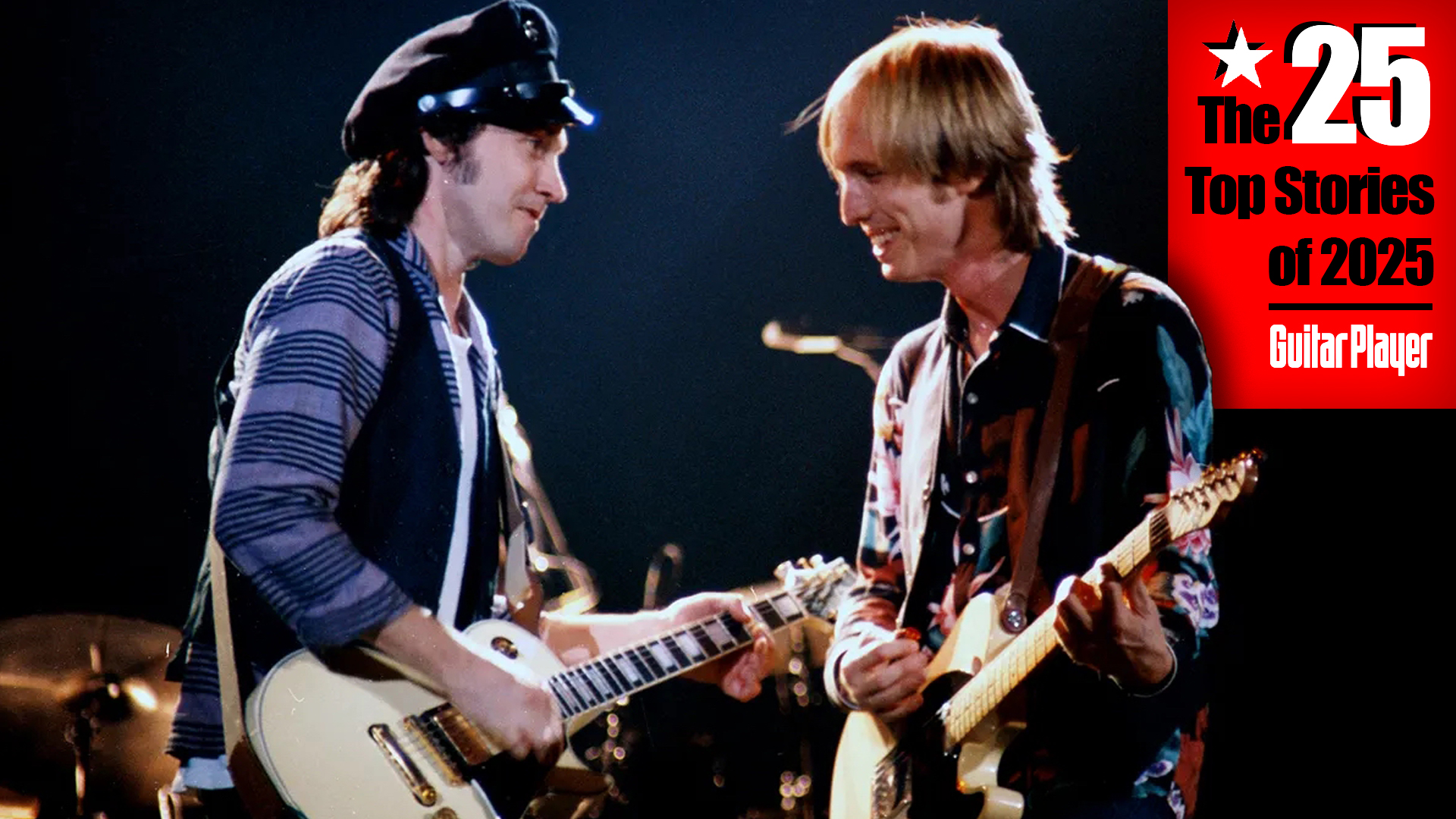Five Things You Should Know About Vibrato Bridges
From subtle tremors to evocative dive-bombs, this is a piece of hardware that can really move you.

Vibrato bridges – also commonly referred to as “tremolo” bridges due to errant usage of the term by Fender for many years – are a purely mechanical means of temporarily altering your guitar’s pitch that can make an extremely creative addition to your playing style.
1. They Can Be Powerful Performance Tools
To grasp the full range of the sound and function of this performance tool, listen to the playing of Duane Eddy, Hank Marvin, Jimi Hendrix, Jeff Beck, and Edward Van Halen. From subtle tremors to evocative dive-bombs, this is a piece of hardware that can really move you.
2. Vintage Units Excel At Subtle Wobbles
By and large, vintage vibrato bridges such as the Bigsby, the Fender Stratocaster, Jazzmaster, or Jaguar units, or Gibson’s Maestro Vibrola, remain within their comfort zones when you restrict them to gentle actions and subtler vibrato effects.
In many cases, the restricted travel of these older designs helps them to excel at those less-extreme uses, whereas more advanced units might feel a little “hair triggered” – hence the enduring popularity of the archaic Bigsby vibrato.
Of course, a Jimi Hendrix or a Jeff Beck can perform breathtaking feats with a vintage Strat unit, even if it wasn’t designed for such extremes.

3. Grab A High-Tech Design For More Dramatic Action
Many updates of the original Fender Strat vibrato bridge are preferred for more intense use. PRS units perform well, as do many two-point fulctrum-style bridges from Wilkinson, Hipshot, Fender, Ernie Ball/Music Man, and others.
Listen to the way that an inventive guitarist such as David Torn incorporates a modern vibrato into his playing, making it as essential to his style as the fretting fingers of his left hand, and you’ll begin to understand the potential of a more high-tech vibrato.
All the latest guitar news, interviews, lessons, reviews, deals and more, direct to your inbox!
For many incendiary rock players, however, the “double-locking” format pioneered by Floyd Rose and Kahler is essential when dipping into serious dive-bombing.
4. They Will Affect Your Tuning
Excessive use of any vibrato bridge will affect your guitar’s tuning – it’s just the nature of the beast. As habitual Bigsby user Neil Young put it, “It’s a guitar, it goes out of tune, no big deal.”
The big deal for some players, though, is that frequent pauses to retune affect the flow of a performance, and possibly elicit an excess of stink-eye from your lead singer.
A good setup, periodic maintenance, and proper string loading can help to minimize tuning instability in any vintage-style vibrato bridge, and modern units such as those made by Floyd Rose and Kramer, which lock the strings at the nut as well as the bridge, typically have only slight tuning issues.
5. They Will Affect Your Tone – Even When Not In Use
A vibrato bridge will affect the sound of any guitar it is mounted on, if only slightly, even when the vibrato bar is not being used. Any guitar’s bridge forms part of a crucial string-anchor point, and therefore is key in transmitting the strings’ vibrational energy into the body of the instrument.
Change the structure of that bridge, and you alter its tone as compared to a “hard-tail” version of the same guitar. The movable, spring-loaded designs of most vibratos also change the playing feel of the guitars onto which they are mounted, typically making them feel a little looser and more rubbery to the fretting fingers.

Dave Hunter is a writer and consulting editor for Guitar Player magazine. His prolific output as author includes Fender 75 Years, The Guitar Amp Handbook, The British Amp Invasion, Ultimate Star Guitars, Guitar Effects Pedals, The Guitar Pickup Handbook, The Fender Telecaster and several other titles. Hunter is a former editor of The Guitar Magazine (UK), and a contributor to Vintage Guitar, Premier Guitar, The Connoisseur and other publications. A contributing essayist to the United States Library of Congress National Recording Preservation Board’s Permanent Archive, he lives in Kittery, ME, with his wife and their two children and fronts the bands A Different Engine and The Stereo Field.

